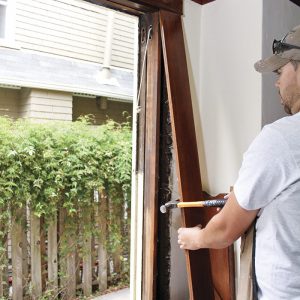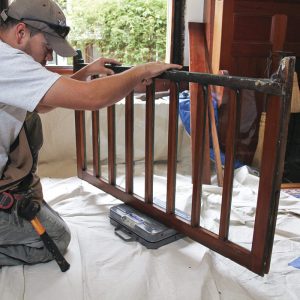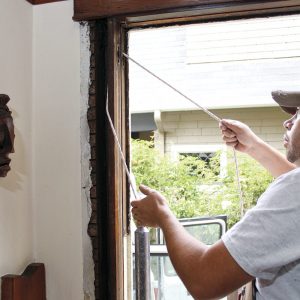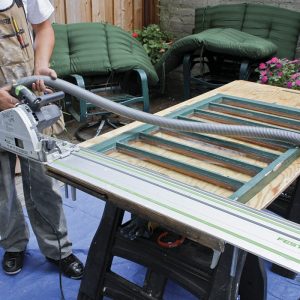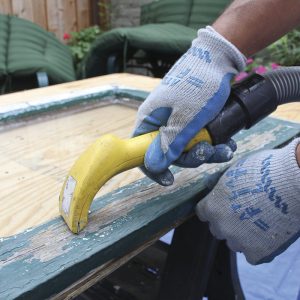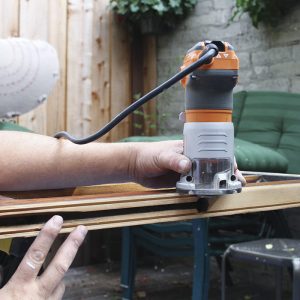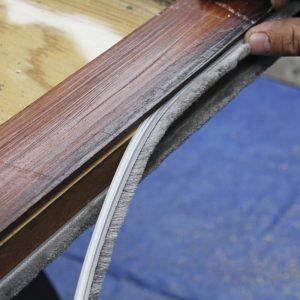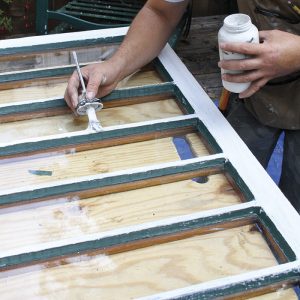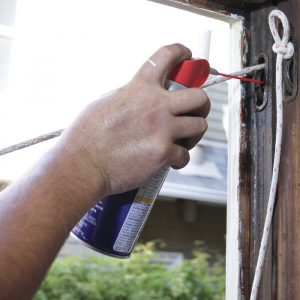
Windows built 50 to 100 years ago often were constructed from fine-grained, rot-resistant fir, cypress, or redwood, woods that are no longer available. For that reason alone, it makes sense to refurbish rather than replace them when they get tired and don’t work so well.
To undertake this task, here are a few common-sense suggestions to supplement the techniques shown in the photo sequence below.
Dress for the job. Sturdy gloves with rubberized palms are essential to avoid cuts and to provide a secure grip on heavy window sashes. Safety glasses with wraparound lenses will protect your eyes from glass shards, irritating dust, and dangerous projectiles should a power tool strike a hidden nail or screw. Because older windows often contain lead-based paint, a HEPA-rated respirator and a HEPA vacuum to capture dust are must-haves.
If children live in the house, it’s especially important to follow the EPA Lead Renovation, Repair, and Painting Rule (RRP Rule). Old windows are a major source of flaking lead-based paint; lead poisoning can devastate a child’s neurological development.
Be methodical. It might make sense, say, to remove and repair all sashes at the same time but only if you’ve carefully noted the location of all trim pieces and sashes beforehand. Also, if there are people in residence, move cutting and sanding operations outside whenever possible, lay tarps to protect finish floors, and vacuum periodically to minimize dust indoors.
| PRO TIP: If double-hung sashes require too much effort to operate after you’ve reattached sash weights, the weights may be too small. |
Finally, three tips. First, for operable sashes, there should be a 3⁄16-in. space between the sash and jamb on each side—3⁄8 in. total—so there’s room for weatherstripping as well as movement. Second, refurbish jambs, too. Pull any old nails or screws sticking out, sand jambs smooth, prime all bare wood, and then, when the paint is dry, rub paraffin—a candle stub will do—along the jambs to allow windows to move easily. Do the same with the sides of refurbished sashes. Lastly, coating jamb channels with a high-gloss marine enamel works almost as well. If you’re looking for a wide choice of airtight seals for old windows, visit www.conservationtechnology.com.

Excerpted from Renovation, 5th Edition (The Taunton Press, 2019) by Michael Litchfield and Chip Harley
Available in the Taunton Store and at Amazon.com.


